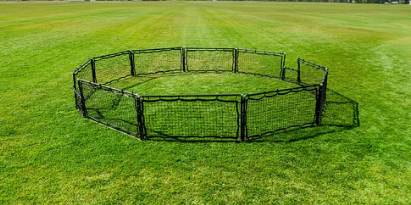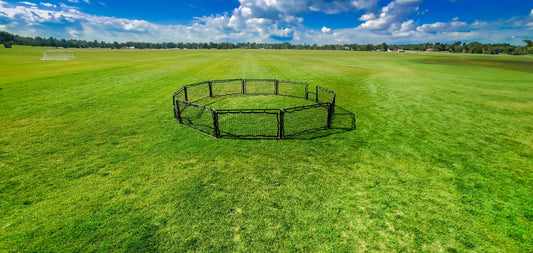Soccer, also known as football in many parts of the world, is a globally popular sport played between two teams of eleven players each. It is a dynamic game that involves both physical skill and strategic thinking. Soccer is played on a rectangular field, known as a pitch, with goals at each end. The objective of the game is for teams to score goals by maneuvering the ball into the opposing team's net while defending their own goal.
Here's an in-depth explanation of various aspects of soccer:
Gameplay: Soccer is played with a round ball, and the primary method of moving the ball is by kicking it. Players use different techniques such as passing, dribbling (running with the ball), and shooting to maintain possession and advance towards the opponent's goal. The team in possession of the ball aims to create scoring opportunities by passing and maneuvering the ball past the opposition's defense.
Positions: Each team typically has several different positions, although the specific formations and player roles may vary. Common positions include:
a. Goalkeeper: Positioned in front of the goal, the goalkeeper's primary role is to prevent the opposing team from scoring by stopping shots on goal.
b. Defenders: Positioned near their own goal, defenders aim to stop the opposing team's attacks and protect their goal. They work together to mark opposing players, intercept passes, and clear the ball away from danger.
c. Midfielders: Positioned in the middle of the field, midfielders play a crucial role in both attack and defense. They distribute the ball, control the tempo of the game, and link the defense with the forwards.
d. Forwards (or Strikers): Positioned near the opponent's goal, forwards are responsible for scoring goals. They often have excellent speed, agility, and goal-scoring abilities.
Rules and Fouls: Soccer has a set of rules that govern the game. Some key rules include:
a. Offside: A player is considered offside if they are nearer to the opponent's goal line than both the ball and the second-to-last defender when the ball is played to them.
b. Fouls: Various actions are considered fouls, such as tackling an opponent in an unfair manner, using excessive force, or impeding an opponent's progress. Fouls result in free kicks or penalties depending on the severity and location on the field.
Competitions: Soccer is played at various levels, from casual games in local communities to professional leagues and international tournaments. Some of the most prestigious competitions include:
a. FIFA World Cup: Held every four years, the FIFA World Cup brings together national teams from around the world to compete for the championship.
b. Domestic Leagues: Countries have their own leagues, such as the English Premier League, La Liga in Spain, or the Bundesliga in Germany, where professional clubs compete against each other over a season.
c. Continental Competitions: Continental tournaments like the UEFA Champions League in Europe or the Copa Libertadores in South America pit the top clubs from different countries against each other.
Strategy and Tactics: Soccer involves strategic planning and tactics. Coaches and teams devise game plans to exploit the strengths of their players, counter their opponents, and create scoring opportunities. Strategies can include possession-based play, fast counter-attacks, pressing the opponents, or a combination of various tactics.
Physical and Mental Demands: Soccer requires physical fitness, including endurance, agility, speed, and strength. Players must be able to run for extended periods, react quickly, and withstand physical challenges from opponents. Moreover, soccer also demands mental sharpness, decision-making skills, teamwork, and communication on the field.
Soccer is more than just a game; it has a rich history, passionate fans, and a significant impact on cultures worldwide. It promotes teamwork, discipline, and sportsmanship, making it one of the most beloved and widely played sports globally.
There are several fun games that can help improve soccer skills while keeping the training session enjoyable. Here are a few examples:
Dribbling Relay: Set up a relay race where players dribble the ball through a designated course. Divide players into teams and have them dribble the ball around cones, perform specific moves like feints or turns, and pass the ball to the next player in line. This game helps improve dribbling, control, and agility.
1v1 Mini-Games: Create small-sided games where players compete against each other in 1v1 situations. This game encourages players to use their dribbling, feints, and quick decision-making skills to beat their opponent and score goals. It enhances individual attacking and defending abilities.
Keep Away: Set up a small playing area and divide players into two teams. One team tries to keep possession of the ball while the other team attempts to win it back. The team in possession aims to make a certain number of consecutive passes without losing the ball. This game helps develop passing accuracy, ball control, and awareness of space.
 Shooting Accuracy Challenge: Create a target or set up a goal with different target zones marked. Assign points to each zone based on its difficulty level. Players take turns shooting at the target and aim to score points by hitting specific areas. This game improves shooting accuracy, technique, and decision-making in front of the goal.
Shooting Accuracy Challenge: Create a target or set up a goal with different target zones marked. Assign points to each zone based on its difficulty level. Players take turns shooting at the target and aim to score points by hitting specific areas. This game improves shooting accuracy, technique, and decision-making in front of the goal.
 Soccer Tennis: Set up a net or a line using cones and divide players into two teams. Players volley the ball back and forth over the net or line using any body part except their hands. The objective is to keep the ball in play and make it difficult for the opposing team to return the ball. This game helps improve ball control, touch, and positioning.
Scrimmages with Restrictions: During regular scrimmages, apply specific restrictions to encourage players to focus on certain skills. For example, you can limit players to a certain number of touches, enforce a rule that requires players to pass the ball a certain number of times before shooting, or play with a smaller field to promote quick decision-making and tighter control.
Gaga Ball: Gaga ball is a fast-paced, inclusive, and highly engaging game that originated in Israel and has gained popularity worldwide. It is played in an octagonal or hexagonal pit, often constructed with low walls or barriers. The objective of gaga ball is to be the last player standing without getting tagged or hit by the ball. Players start inside the pit, and the game begins with someone throwing or hitting a soft foam ball into the air. Once the ball bounces twice, players can then hit the ball with their hands to keep it in play. The ball must stay below waist level, and players can strike it to hit opponents' legs or target specific areas to eliminate them. If a player is hit by the ball or the ball bounces off them above waist level, they are out of the game. The game continues until one player remains. Gaga ball is known for its fast pace, quick reflexes, and constant movement. It requires agility, hand-eye coordination, and strategic positioning to dodge the ball while trying to hit opponents. The game promotes fair play and encourages players of all ages and skill levels to participate. Gaga ball is often played in schools, community centers, camps, and other recreational settings due to its simplicity and the ability to accommodate a large number of players simultaneously. It fosters social interaction, friendly competition, and physical activity, making it a popular choice for group play and friendly tournaments.
Soccer Tennis: Set up a net or a line using cones and divide players into two teams. Players volley the ball back and forth over the net or line using any body part except their hands. The objective is to keep the ball in play and make it difficult for the opposing team to return the ball. This game helps improve ball control, touch, and positioning.
Scrimmages with Restrictions: During regular scrimmages, apply specific restrictions to encourage players to focus on certain skills. For example, you can limit players to a certain number of touches, enforce a rule that requires players to pass the ball a certain number of times before shooting, or play with a smaller field to promote quick decision-making and tighter control.
Gaga Ball: Gaga ball is a fast-paced, inclusive, and highly engaging game that originated in Israel and has gained popularity worldwide. It is played in an octagonal or hexagonal pit, often constructed with low walls or barriers. The objective of gaga ball is to be the last player standing without getting tagged or hit by the ball. Players start inside the pit, and the game begins with someone throwing or hitting a soft foam ball into the air. Once the ball bounces twice, players can then hit the ball with their hands to keep it in play. The ball must stay below waist level, and players can strike it to hit opponents' legs or target specific areas to eliminate them. If a player is hit by the ball or the ball bounces off them above waist level, they are out of the game. The game continues until one player remains. Gaga ball is known for its fast pace, quick reflexes, and constant movement. It requires agility, hand-eye coordination, and strategic positioning to dodge the ball while trying to hit opponents. The game promotes fair play and encourages players of all ages and skill levels to participate. Gaga ball is often played in schools, community centers, camps, and other recreational settings due to its simplicity and the ability to accommodate a large number of players simultaneously. It fosters social interaction, friendly competition, and physical activity, making it a popular choice for group play and friendly tournaments.

Remember, incorporating a sense of competition, rewards, and small-sided games can make training sessions more enjoyable and engaging while still allowing players to develop their soccer skills.
About the Author
A consistent contributor to PE health and game ideas. Nic has been writing for Castle Sports for 2 years.










